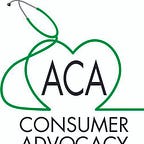Health Care Reform Depends on Gun Violence Prevention
Health care reform can only be truly realized when we address all of the issues that touch on it. One area that must be addressed is gun violence and the epidemic of carnage it is causing in American society.
Nationally we often focus on the deaths caused by gun violence, or more often, only those shootings that are categorized as “mass shootings,” where four or more people are killed or injured. This narrow focus causes us to disregard the total costs, both monetary and physical, of the uncontrolled and virulent obsession of firearms in this country.
According to a study published in the Journal of the American College of Surgeons, injuries from gun violence costs the U.S. health care system $170 billion a year. Surgeries alone account for $16 billion. That doesn’t take into account those who did not need major surgery between the years of 2005 to 2016.
Any victim of gun violence is automatically entered into the fellowship of those with ‘pre-existing conditions,’ which, if the Affordable Care Act’s protections are ever removed, would mean insurance companies could once again refuse to cover future needed medical and rehabilitative care stemming from the injury.
Victims of gun violence must also deal with the mental anguish of becoming a victim, not to mention the potential of PTSD, and even survivor’s guilt if they survived a mass shooting where others did not. These require potentially years of mental health care, and the associated physical manifestations that can develop from mental illness and stress.
Family members of both survivors and those who died from gun violence also incur medical costs for mental health and associated physical manifestations.
According to Dr. Peyman Benharash, an associate professor-in-residence of surgery and bioengineering at the David Geffen School of Medicine at the University of California, Los Angeles, who worked on the report, “It’s very important to put it in perspective that this entity is quite economically burdensome,” he said. “If you’re looking at prevention vs. treating a gunshot wound from an economic standpoint, it would make sense to invest in anti-violence interventions that can reduce assaults that are often preventable.”
According to Everytown for Gun Safety, the cost of gun violence during the time of Covid-19 is even higher. They projected the total cost of gun violence at $280 billion for taxpayers, families, communities, survivors, and employers — above and beyond simply the costs related to health care. They go on to break this down:
- $34.8 million daily for medical care, first responders, ambulances, police, and criminal justice services
- $4.7 million in out of pocket costs daily for medical and mental health bills, and $140.3 million in losses from work due to injury or death
- An estimated $586 million per day lost in intangible costs from pain and suffering of victims and their families
- $1.4 million lost daily for employers in productivity, revenue, and costs to recruit and train replacements lost to gun violence.
Our current health care system comprises an estimated one fifth of our economy. According to the Health System Tracker, in 2019 health spending in the U.S. reached $3.8 trillion. Numbers for 2020 are lower in many cases, due to the impact of the Covid-19 pandemic. Using the numbers above, addressing gun violence could help reduce our health care costs by 4.5–5%, and reduce total costs to us all by upwards of 7 percent. While it may seem an insignificant amount in comparison, that is $200 billion that could be used in other areas that we desperately need to address, like education, infrastructure, clean air and water, climate change mitigation, food security, social justice reform, justice system reform, immigration reform, and more.
Financial figures are one thing, but not the most important consideration. The sheer number of potential world changers we lose every day in this country, those who could have led us toward a better future for all, is a national tragedy and disgrace. For a nation that claims to value life, those lawmakers and voters who constantly wave the banner that life is precious, we have a long and sad record of meaning only some lives matter. We won’t even get into the fact that the 2nd Amendment contains a second section that includes the phrase ‘well regulated;’ that is for another day.
In 2020, according to The Gun Violence Archive, over 43,000 people in the U.S. were killed by guns — 19,000 by others and 24,000 by suicide. The total number of people shot who survived is over 39,000. In 2021, over 20,000 people were killed, excluding suicides, and the U.S. saw 693 mass shootings.
What can you do? There are several grassroots organizations working on gun violence prevention. Some advocate for the elimination of firearms, others for stronger regulation and laws — as with health care reform, there is a wide tent of advocates. Some groups to check out include Newtown Action Alliance, Moms Demand Action for Gun Sense in America, March for Our Lives, and Giffords Law Center to Prevent Gun Violence, Each of these groups have local and state-based groups, as well as national agendas. There are other groups, but this is a good start. Find one and get involved.
If we really are serious about reducing the costs of health care in the United States, then we must get serious about gun violence prevention now. If we are committed to true health care reform, we must advocate for gun violence prevention, too.
